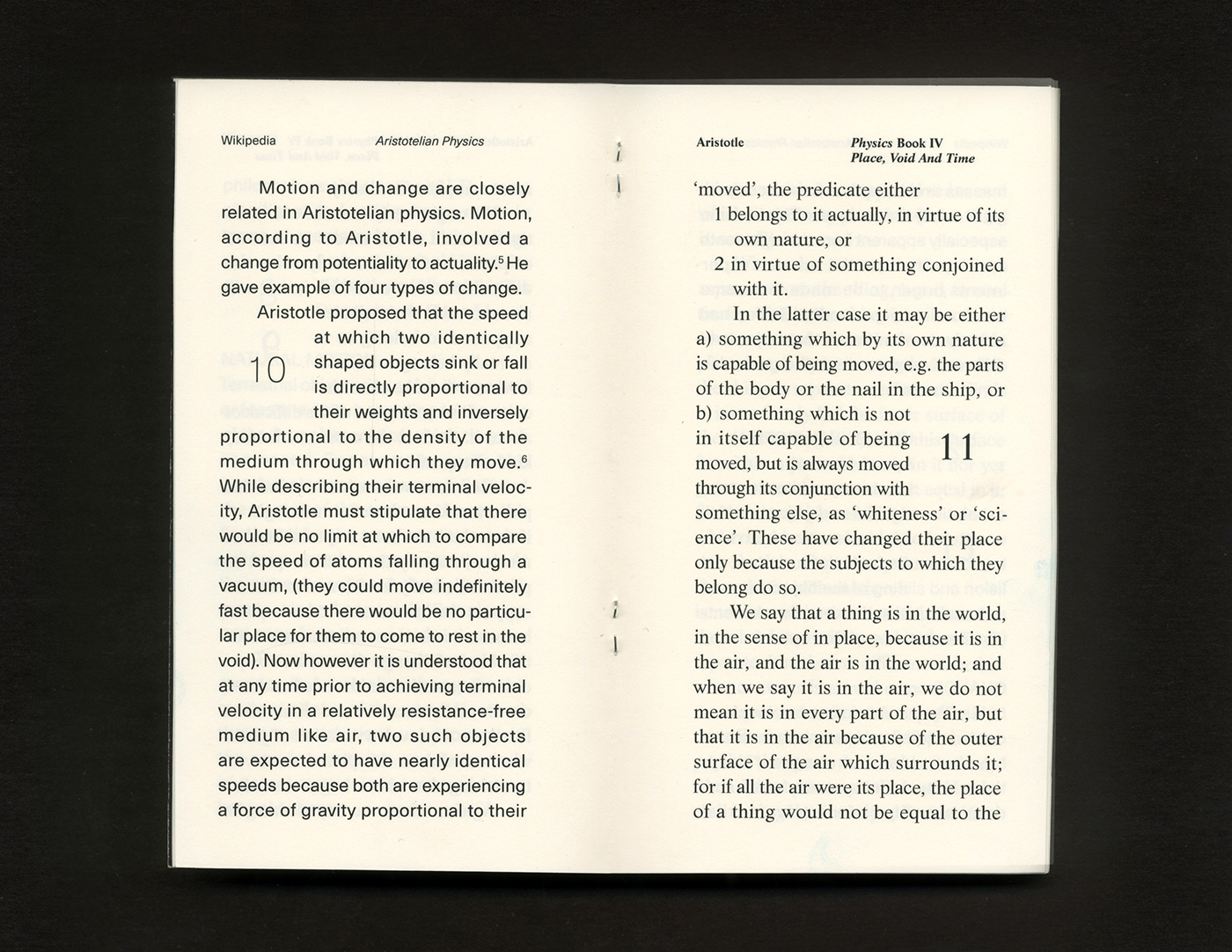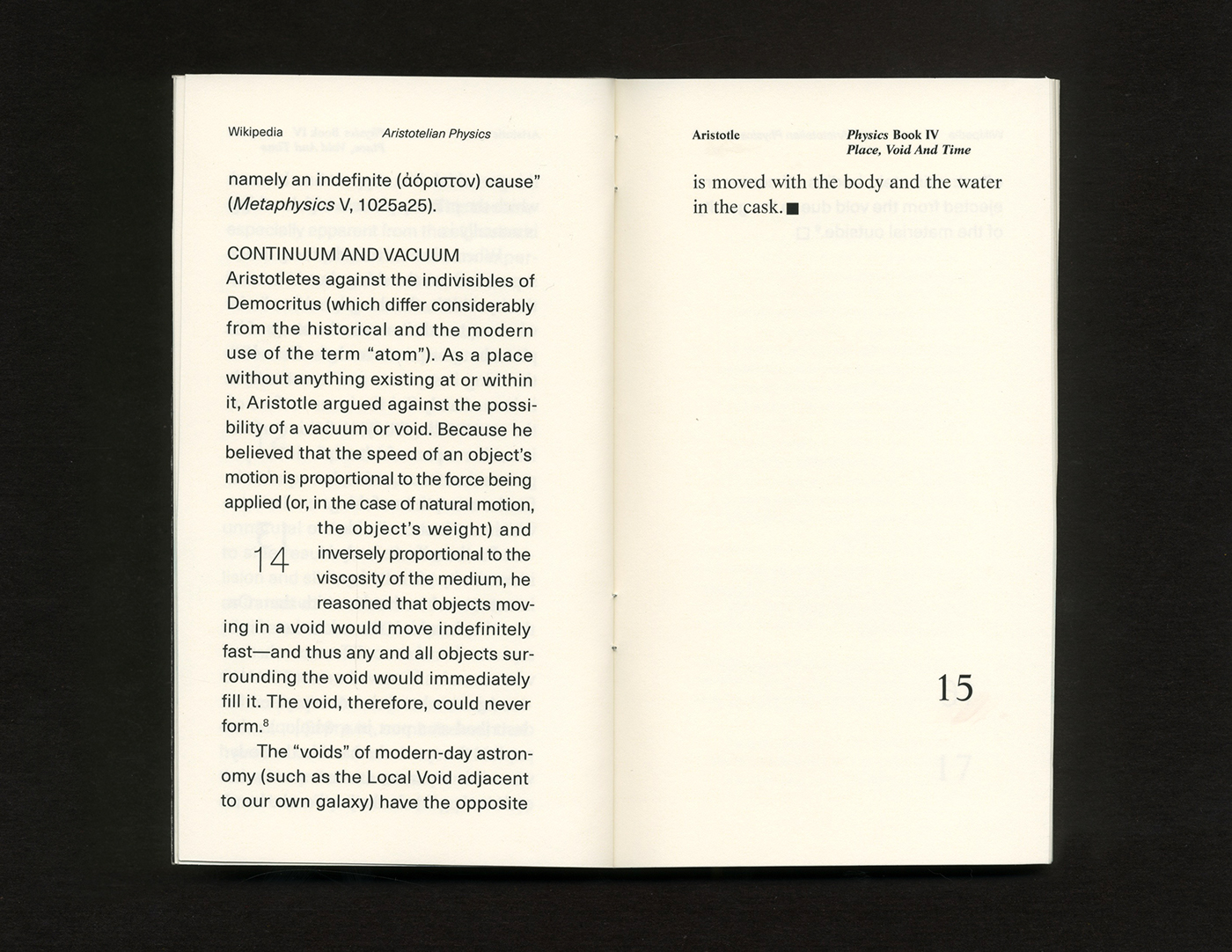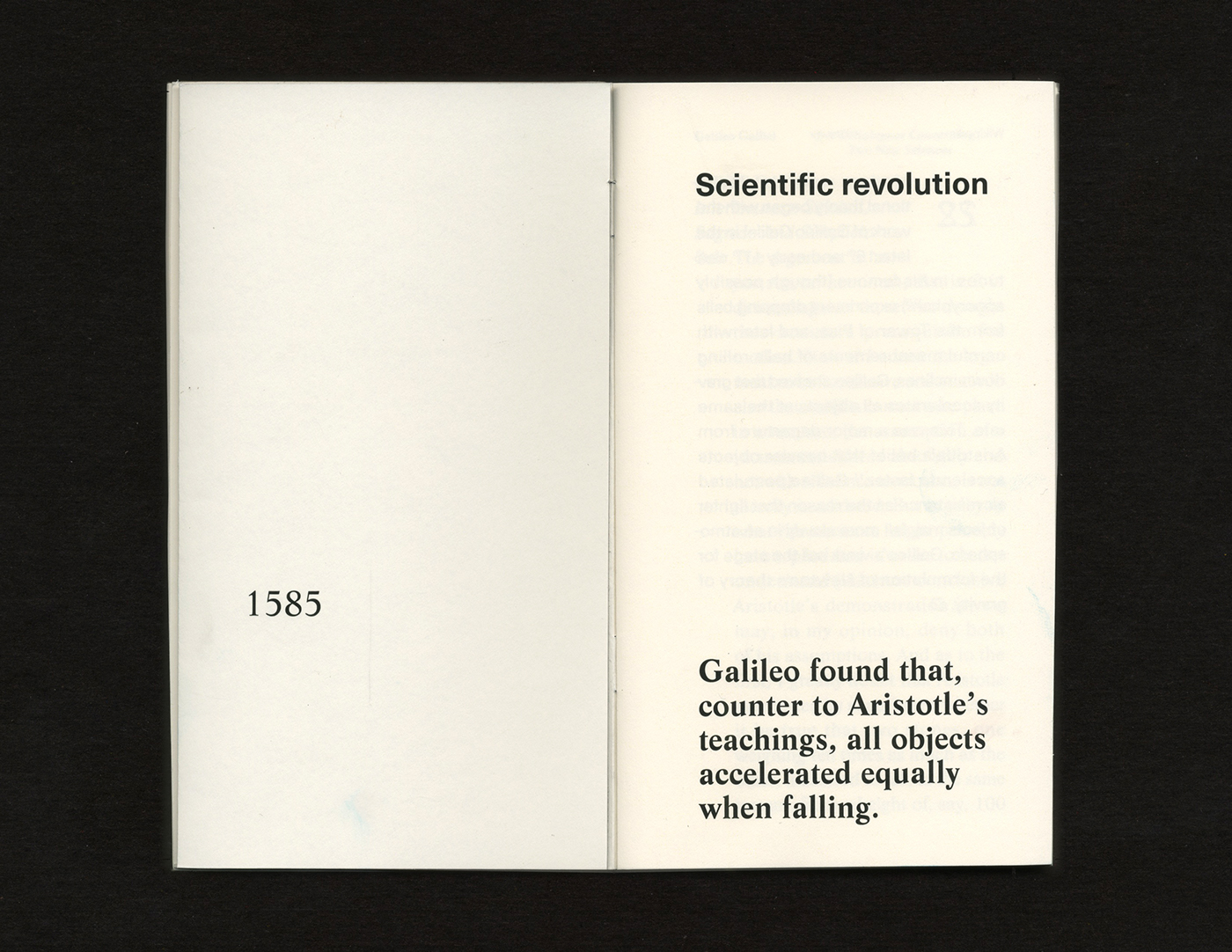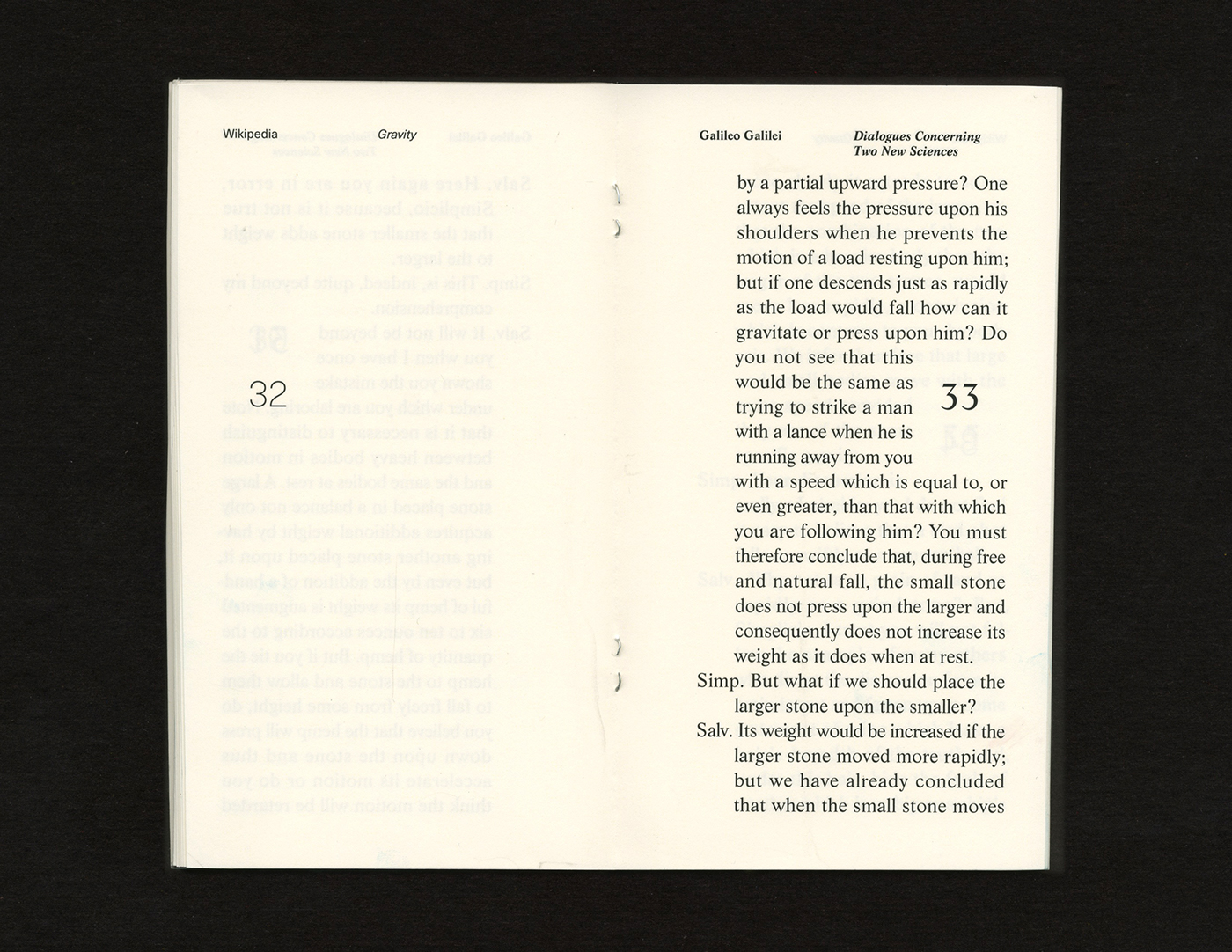This project uses typographical treatment to express human understanding of gravity in five different eras—from the earth bound fall to the fluidity of quantum field.
Man has long been aware of the concept of up and down, and that different objects have different weights. Ancient Greek philosopher Aristotle believed that objects move downward toward the center of the universe, which was their natural place, and he was convinced that heavier objects must fall faster than lighter objects. These ideas were held as true for almost 2000 more years until Galileo proposed that a falling body would fall with a uniform acceleration. Newton brought in additional enlightenment to gravitational thought by developing the first convincing mathematical theory of gravity — two masses are attracted toward each other by a force whose effect decreases according to the inverse square of the distance between them. From this point, gravity is no longer the earthbound force, but a relational force between any objects. Newton’s law of universal gravitation, in turn, was replaced by Einstein’s General theory of relativity, which describes gravity as a consequence of the curvature of spacetime rather than a force. A complete theory of quantum gravity is required when trying to describe gravity according to the principles of quantum mechanics. Human minds have been freed from the inevitable fall to the force of geocentrism, and the idea of gravity is becoming more relational and fluid. The idea of gravity has lost its fateful weight.
Man has long been aware of the concept of up and down, and that different objects have different weights. Ancient Greek philosopher Aristotle believed that objects move downward toward the center of the universe, which was their natural place, and he was convinced that heavier objects must fall faster than lighter objects. These ideas were held as true for almost 2000 more years until Galileo proposed that a falling body would fall with a uniform acceleration. Newton brought in additional enlightenment to gravitational thought by developing the first convincing mathematical theory of gravity — two masses are attracted toward each other by a force whose effect decreases according to the inverse square of the distance between them. From this point, gravity is no longer the earthbound force, but a relational force between any objects. Newton’s law of universal gravitation, in turn, was replaced by Einstein’s General theory of relativity, which describes gravity as a consequence of the curvature of spacetime rather than a force. A complete theory of quantum gravity is required when trying to describe gravity according to the principles of quantum mechanics. Human minds have been freed from the inevitable fall to the force of geocentrism, and the idea of gravity is becoming more relational and fluid. The idea of gravity has lost its fateful weight.
























